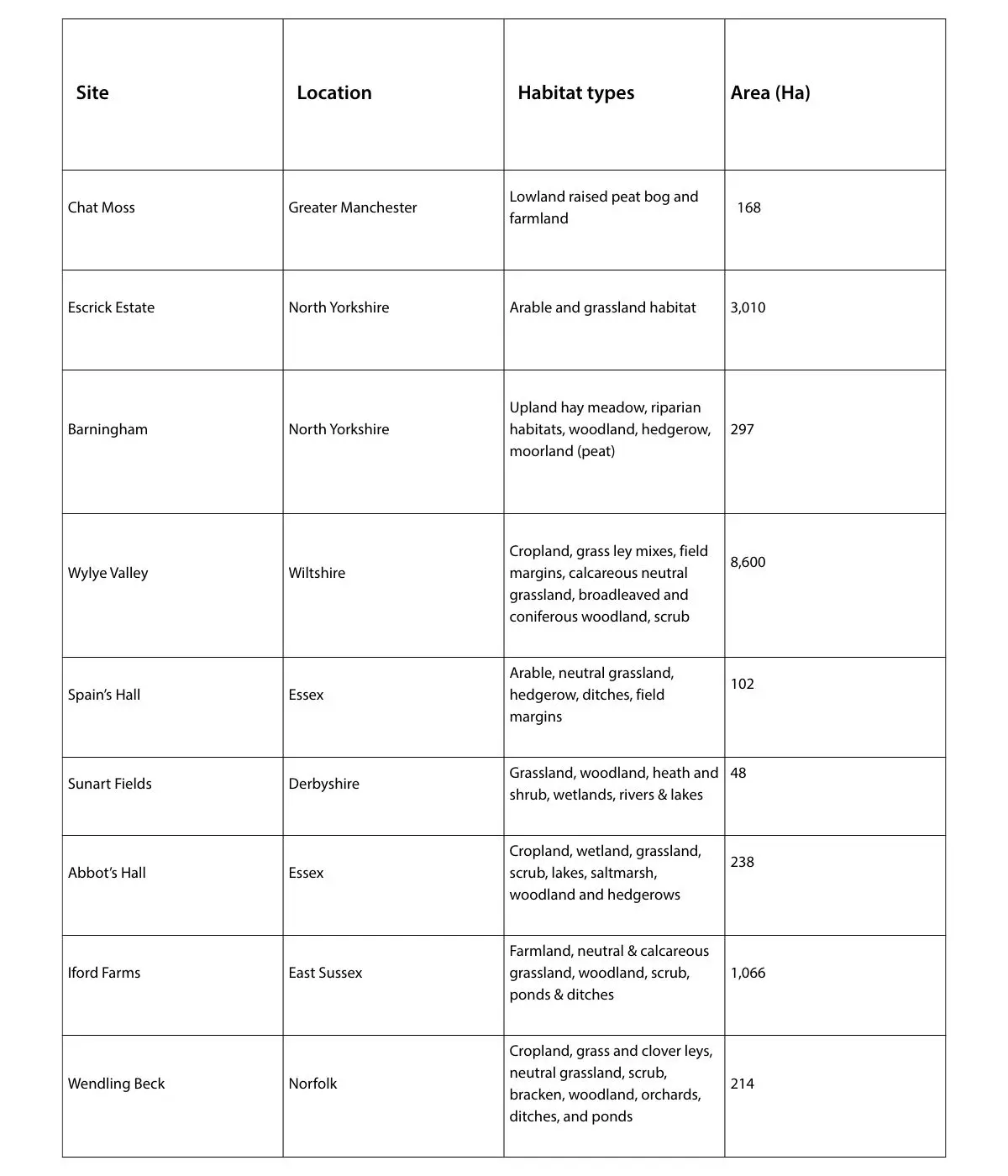Overview
In 2020 and 2021 Cura Terrae Land and Nature, formerly Ecus, successfully delivered the Biodiversity Credit Scheme pilot on behalf of Natural England. The purpose of the project was to inform the design of the biodiversity credit scheme by testing the assembly of a biodiversity credit investment pipeline and payment structures for habitat provision. The key outcome for Natural England was to test some of the approaches and mechanisms to form part of the final design for the investment side of the credits scheme. A fundamental purpose of the pilot was to capture the wider learning, especially the nuanced unforeseen issues which may have affected individual landowners/project partners.
The Client
Natural England is the government’s adviser for the natural environment in England. It helps to protect and restore our natural world. Natural England is an executive non-departmental public body, sponsored by the Department for Environment, Food & Rural Affairs. It was established by an Act of Parliament in 2006. Its purpose is to help conserve, enhance and manage the natural environment for the benefit of present and future generations, thereby contributing to sustainable development.
Its priorities for 2020 to 2025 support the mission and ambitions of the government’s 25 Year Environment Plan. It aims for a well-managed Nature Recovery Network across land, water and sea, which creates and protects resilient ecosystems rich in wildlife and natural beauty, enjoyed by people and widely benefiting society.
The Challenge
One of the key challenges in delivering this project was the tight project timescales which were dictated by the wider programme to deliver the biodiversity credit scheme. We were appointed in September 2020 and to deliver site surveys and develop fully costed 30-year Habitat Management Plans for nine pilot sites between October 2020 and March 2021.
The aim of the project was to evaluate what it takes to get a site ‘investment ready’ for the Biodiversity Credit Scheme. This strategically important project involved working with the nine pilot sites to carry out baseline biodiversity assessments and to develop fully costed 30-year Habitat Management Plans (HMP) to deliver biodiversity net gain.
The nine sites ranged from 48 ha to over 8,000 ha and encompassed a wide range of habitat types. The sites, their locations, and the broad habitat types we surveyed are summarised in the table below:

The Solution
Due to the wide geographical range of the sites, we mobilised ecologists from every office to deliver the baseline surveys. Where necessary we ensured that our ecologists with specific habitat and protected species knowledge were allocated to support particular projects where more complex issues were found. This included pilot sites where specific wetland restoration was required and one where Beavers had been reintroduced as part of natural flood management, for example.
This involved a significant degree of co-ordination across our regional teams, the various disciplines involved, the pilot site landowners and with the Natural England project steering group.
Following the initial project meeting with Natural England, our Project Director delivered a project briefing to our project team to ensure that all staff understood the aims, objectives, deliverables, and project programme. We allocated groups of sites to a ‘North’ and a ‘South’ team overseen by a Project Manager, and each site was then managed by one of our regional teams with a habitat and protected species specialist where required. Our other multi-disciplinary teams were allocated to support specific pilot projects where specific issues were identified. This included heritage, landscape and arboriculture.
Habitat data to inform the BNG baseline assessment was collected digitally in the field using the QField recording app on Android tablets. This approach allowed for much greater efficiency and accuracy in field data collection and enabled us to produce a detailed multilayer GIS map of all vegetation, habitats, protected species, invasive species and risk elements for each pilot site.
We produced an initial BNG baseline report for each site which formed the basis for consultation with the landowners about potential enhancements. The report and consultation informed the development of the HMP for each pilot project. The habitat management aims for each of the nine projects were to retain, enhance and create biodiversity within the project area to make it ready to receive credits and deliver a net gain for biodiversity. The main driver behind the HMP was to achieve a net gain which was ultimately driven by the need to provide compensation for other development projects.
The HMPs were developed in consultation with the project partners, a wide range of stakeholders and considered other local strategic plans. Some of the sites were in National Parks whilst others incorporated statutory protected sites within (or within part) of the project area. As such, each HMP was subject to a bespoke consultation process to ensure that all relevant parties / potential constraints had been fully considered. In addition to this, the arboriculture, landscape and heritage teams were involved in all projects to provide a holistic approach to each project.
The full 30-year costings for the HMPs were developed by our Head of Habitats in consultation with our ecologists, landscape specialists and arboriculturists as well as the landowners and other relevant stakeholders.
Client Benefits
- The main output from the pilot was a better understanding for Natural England of the costs associated with delivering biodiversity units over a 30-year timescale. This helped to build the evidence base which has helped to inform the development of the costs per unit for BNG.
- One of Natural England’s key outcomes for this project was providing a better understating of how BNG can enhance and create biodiversity in line with local nature recovery aims and other objectives within a specific area.
- At the Project Level Scale, we developed a governance structure to address the specific issues associated with discrete sites. At the Landscape Scale, BNG and its delivery had to consider other environmental issues and stakeholders beyond the pilot sites. This encompassed opportunities to consider bigger, better and more connected habitat to deliver net gain greater than the sum of its constituent parts.
- We were also able to identify some of the wider issues that will need to be taken into account with BNG. These include the consideration of connectivity and place within wider landscapes, heritage issues associated with scheduled ancient monuments and other heritage assets, and woodland and forestry requirements.






